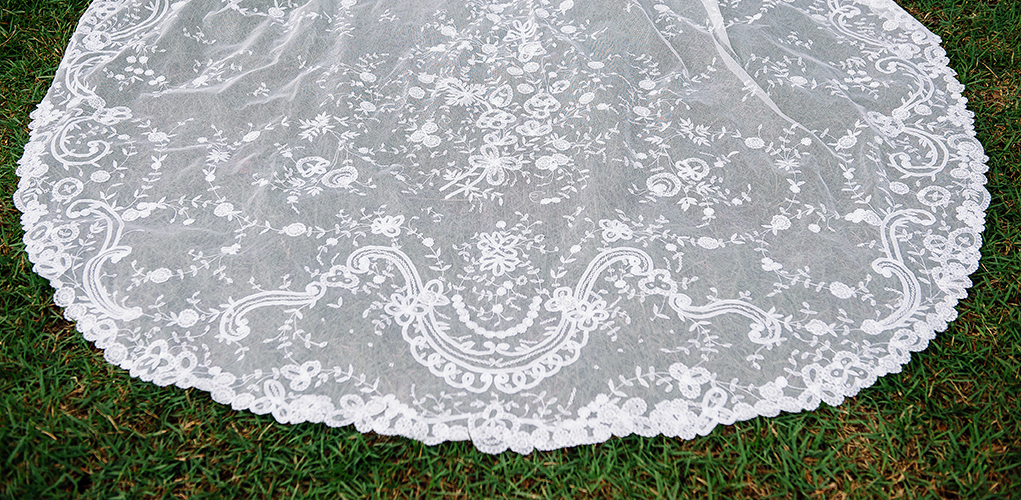
photo by Jennings King
I recently was introduced to Jacqueline Sydnor of Mariee Lace Veils and was intrigued by her amazing story and the very special veils that her business is based upon .
Like a Belgian lace veil, my business has been passed down to me. My mother-in-law was a very successful bridal designer and owner of Tica Designs based in Birmingham Alabama. Tica fell in love with Belgian lace veils while on a trip to Brugge, Belgium. She began working with a Belgian lace family and started importing veils to the United States. She advertised her designs and veils in the first Martha Stewart Weddings Magazine. At that point, America fell in love with Belgian Lace veils and we continue the tradition today as Mariée Lace Veils.
Jacqueline was the fourth bride in her family to wear her family’s Belgian lace veil, and of course she is saving it for one of her son’s future wives. And I love that is all from two Southern women!
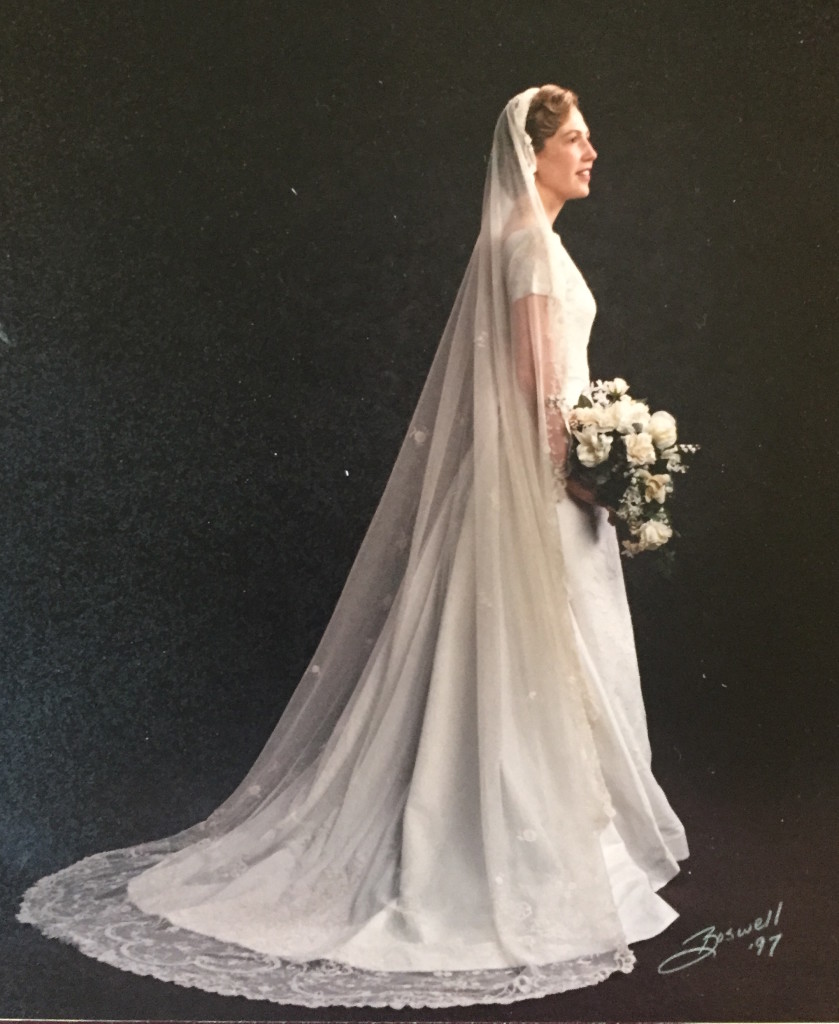
In 1997, Tica designed the gown and imported a lace veil for the high profile wedding of Alexis Brinkley and Jeremiah Collins (read their nytimes.com write up here).
Lace has always been a status symbol. In the past, it was such an expensive luxury item that only ladies from the noble class could afford to purchase it. At the end of the 19th century, there was a lace boom. Women of every class wanted to possess lace. As the demand for lace was exceptionally high, the commercialization of lace was necessary. Therefore, a new type of lace was introduced at the end of the 19th century in Belgium. It was called Princess lace.
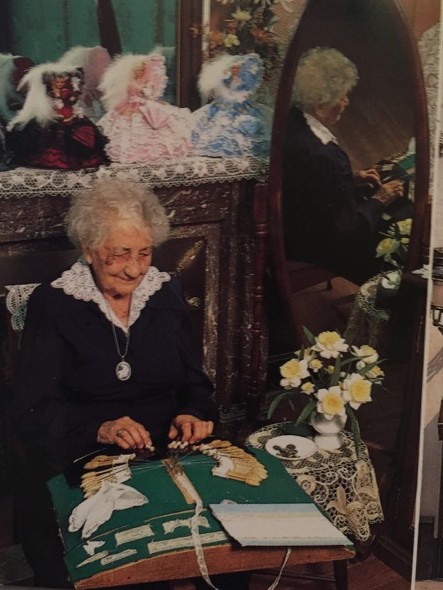
The introduction of this lace was an immediate success. By the end of the 19th century, the royal family of Belgium ordered the most wonderful Princess laces. Queen Maria-Hendrika was a dedicated fan of it, and the Belgian royals were so pleased that they granted the permission to call this Belgian lace Princess lace. In the past, it was sometimes also called Royal lace or Imperial lace as the courts of Europe ordered these laces.
Princess lace was mostly a home industry. This was very comfortable for the lace makers. In 1993, there were still 15 lace merchants who ordered lace makers to make Princess lace. But today, the number of Princess lace merchants and lace makers is decreasing as there are only 4-5 remaining and they are between the ages of 60-90. Since there is no one to take over this craft once these ladies are unable to make the lace anymore, Princess lace is now such a unique piece of art that, if passed down from generation to generation, will be treasured forever.
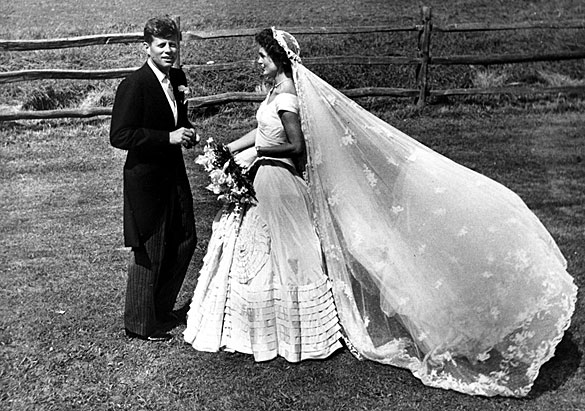
This is a wonderful article from the Biltmore’s website on the importance of heirloom family wedding veils like the one Belgian rose lace one worn by Jacqueline Kennedy above.


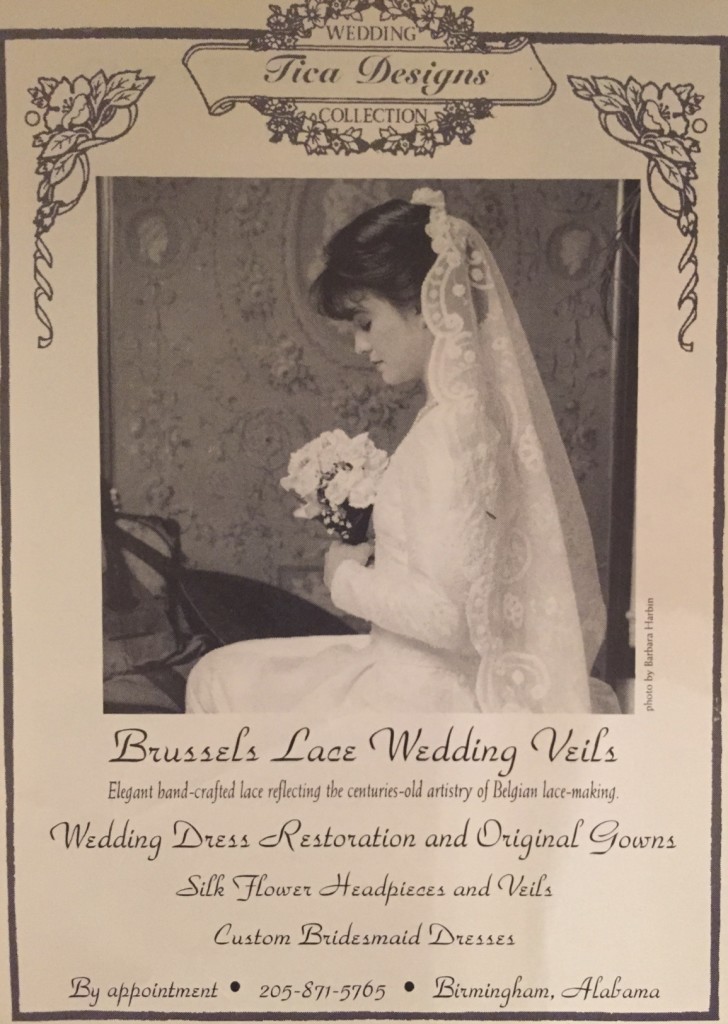
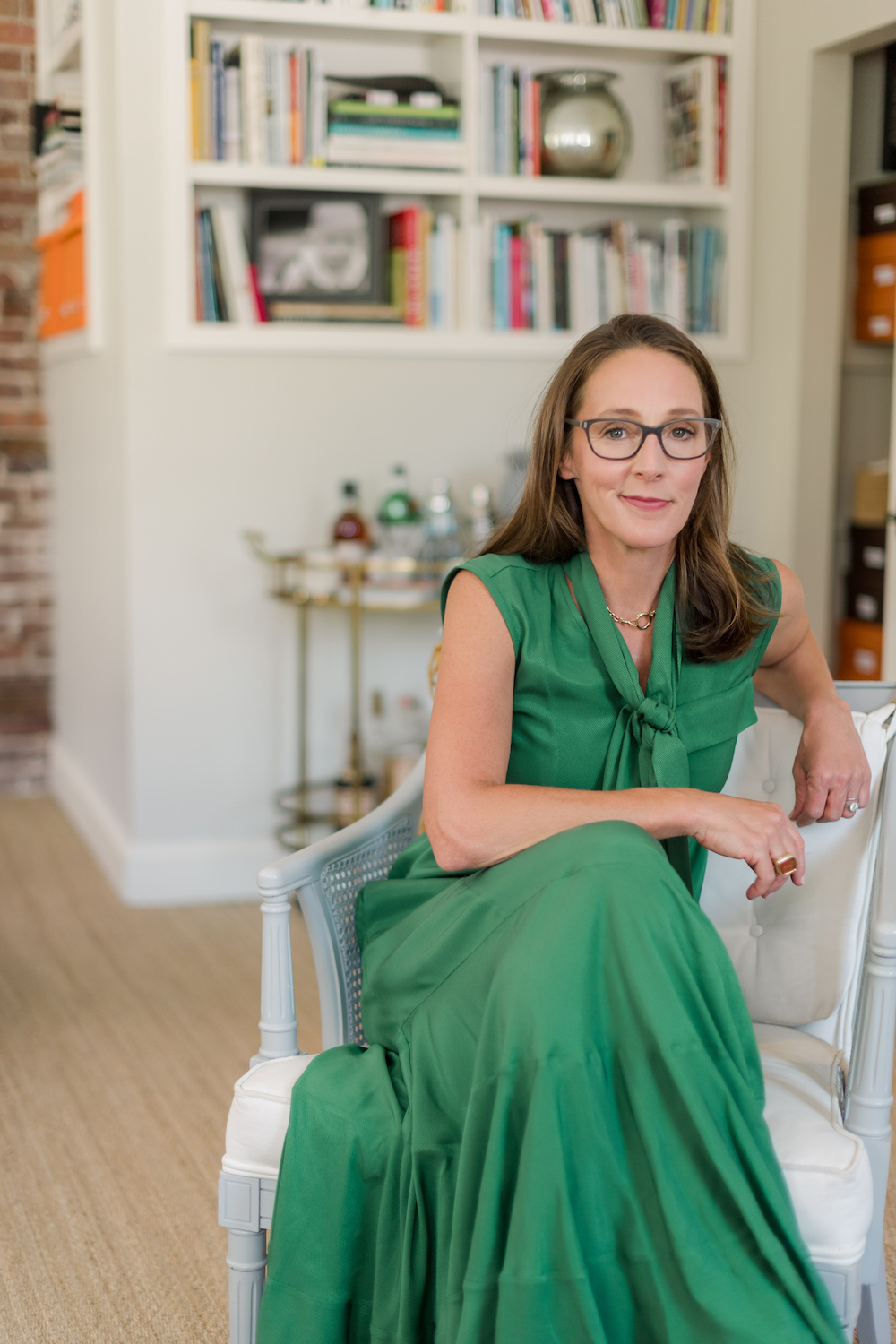



I have my mother’s wedding veil. In 1949, she purchased the veil from the Gargiulo family in Sorrento, Italy. She paid $1000 for the veil. It is rose point lace and has a very long train. Mother was told the veil was made by nuns in the basement of a Catholic Church in the early 1900’s. I am curious to know more about this veil’s history, can you suggest a direction for me to go to research this? Thank you and God bless you.
Yes, please see more on Mariee Lace Veils…